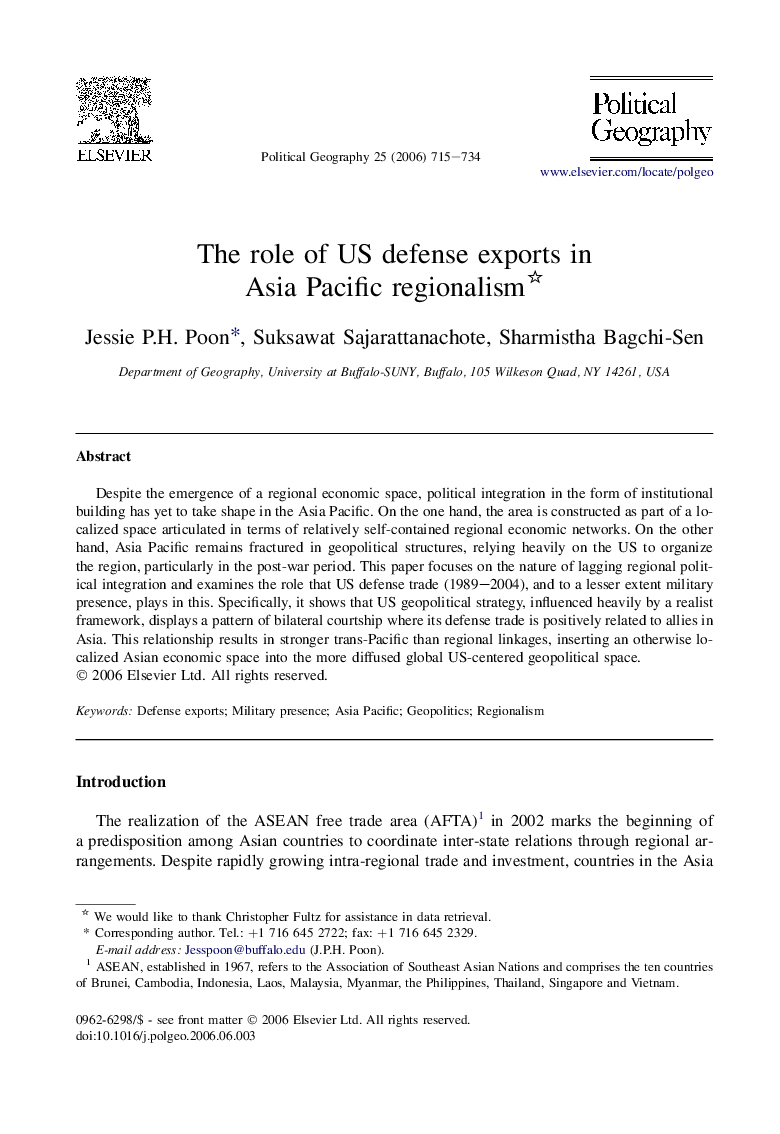| Article ID | Journal | Published Year | Pages | File Type |
|---|---|---|---|---|
| 1062589 | Political Geography | 2006 | 20 Pages |
Despite the emergence of a regional economic space, political integration in the form of institutional building has yet to take shape in the Asia Pacific. On the one hand, the area is constructed as part of a localized space articulated in terms of relatively self-contained regional economic networks. On the other hand, Asia Pacific remains fractured in geopolitical structures, relying heavily on the US to organize the region, particularly in the post-war period. This paper focuses on the nature of lagging regional political integration and examines the role that US defense trade (1989–2004), and to a lesser extent military presence, plays in this. Specifically, it shows that US geopolitical strategy, influenced heavily by a realist framework, displays a pattern of bilateral courtship where its defense trade is positively related to allies in Asia. This relationship results in stronger trans-Pacific than regional linkages, inserting an otherwise localized Asian economic space into the more diffused global US-centered geopolitical space.
